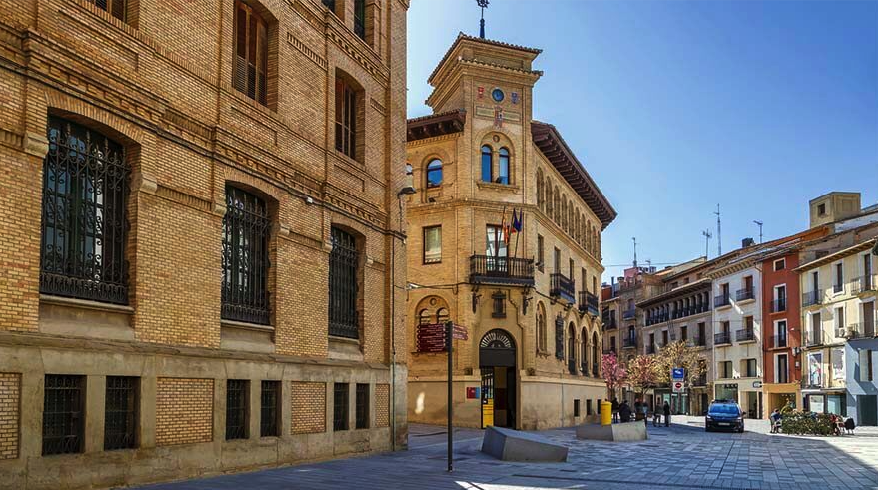Be enchanted by the allure of Huesca, a city that blends tradition and contemporary and is surrounded by diverse and beautiful surroundings.
The population of Huesca’s capital city is 52,000. It serves as the entrance to the Pyrenees, a region famous for its Romanesque buildings, ski resorts, and breathtaking scenery. With just over 50,000 residents, the city is one of Spain’s least populous provincial capitals. Despite having had a portion of its ancient town demolished, it still has a lot of noteworthy buildings that are significant both architecturally and historically. Its Romanesque cathedral, typical of the region, stands out.
Best time to visit:
Though the summer is the ideal season to visit, there is frequently plenty of sunshine in January and February. It’s fiesta time in August.
What to do:
- You might want to skip Huesca City’s Fiesta Mayor, which takes place from August 9 to August 15 and features concerts and public intoxication.
- The province hosts a number of international music festivals in July and August.
- Sports in the winter are available at Canfranc, Benasque, Astn, Cerler, Candanch, and other ski resorts.
- Canyoning is the wetsuit-enabled descent of alpine rivers through gorges and caves. Flash floods make June dangerous.
- Mountaineering
- Hiking
- Soccer game at SD Huesca.
Places to Visit:
- A Renaissance altarpiece made of carved alabaster by Damian Forment and late Gothic entrances may be found at the Cathedral of Huesca, which was constructed over a former mosque.
- The Modernista (Art Nouveau) Casino in the heart of the city has a bar and intriguing decor that may be toured.
- The City Hall houses the well-known “Cuadro de la Campana” painting depicting the aforementioned historical occasion.
- The largest park in the city, Miguel Servet Park, contains a number of unique structures and statues, including the Origami Birds Statue and a reproduction of Snow White and the Seven Dwarves’ House.
- The San Pedro el Viejo monastery is well-known for its Romanesque cloister.
- El Coso, is the main thoroughfare that encircles the old town.
Where to Stay:
- Hotel Lacasa Faus Hutte is located on the west slope of Pirineos Mountain, 1000 metres above sea level, on the Carretera de Francia. It takes 12 minutes to get there from Astn and Candanch ski resorts. Lacasa Faus-Hutte is 12 kilometres from Jaca City. The valleys of Ansó, Hecho, Ordesa, El Roncal, and Valle de Tena are all easily accessible.
- Hotel Pirineo Spa Monasterio de Boltaa – The River Ara, nearly the last remaining wild river in the Pyrenees, passes by the hotel doors. One of these mountains’ most stunning rivers.
How to get in town:
- By bus
The Alosa bus connects you to the city and nearby towns. Regular bus routes connect Zaragoza and Huesca with Barcelona. From the main bus station at Zaragoza Airport, you may go to Huesca and other provincial towns.
- By car
- By plane
From Huesca-Pirineos Airport via plane 1. There are no more scheduled flights from this airport. Zaragoza Airport is the closest airport. It is serviced by Ryanair.
- By train
By way of Huesca station. There are trains from Barcelona and Madrid.
Enjoy your time in town!

